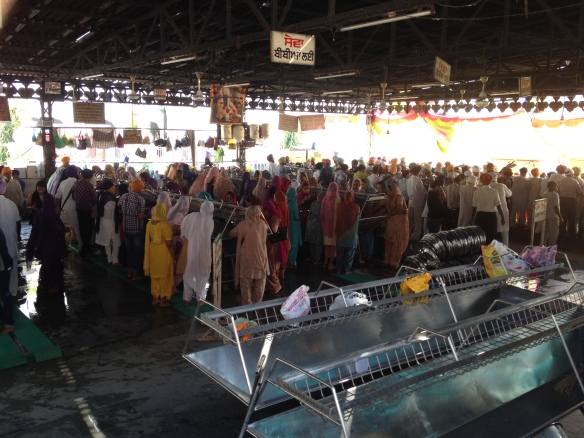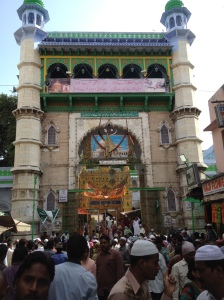The first stop for any traveller to Rajasthan is usually Jaipur, the capital of this much-visited state. This busy city has some wonderful palaces and architecture.
My first experience here, however, was quite chaotic. As soon as I got off the bus, scores of people and rickshaw drivers were trying to conduct me to budget hotels, for their big commission. They were chasing after me everywhere to pretend they had taken me there. It took me like 2 hours to give all of them the slip and find a place. While this happened in all Indian cities, in Jaipur they were, by far, the most pushy.
The city centre is known as ‘The Pink City”. You might well imagine the reason: every building is painted in pink!! Apparently, this tradition goes back to 1876, when the whole city was painted pink to welcome Edward, Prince of Wales.
The flagship building of Jaipur is the -pink- Hawa Mahal, with its very unique and elegant facade. It was built with small windows to allow royal ladies to observe everyday life in the street below without being seen. The Hawa Mahal is close to the other important buildings of the city, particularly the Royal Palace.
The streets of the pink city were full of life and buzzing commerce. After all, this is the capital of one of the most important and populated states in India. I only saw a few foreigners, far less than I expected for a city so much on the tourist map. Later on, when I entered the Royal Palace, I understood why: they come in buses or vans and only get off the bus on the palaces, hotels or the per-arranged tourist restaurant.
Other inhabitants of the Pink City are this monkeys that I hated, called Langurs :). As you can see, this man was having a few words with one of them who was sitting on a motorbike and probably trying to steal the guy’s produce 🙂
The streets, busy as always in India, were populated by street vendors, cows, motorbikes, rickshaws, autos, cars, and pedestrians alike.
A few kilometres outside of Jaipur lies Amber, where the Majarahas’ capital used to be before the scarcity of water forced them to move to Jaipur. The palace here is very impressive, and no less its setting. wow! If you are too lazy to climb the few stairs to the palace, no worries, elephants take tourists up, although of course for a hefty fee.
From Jaipur I took a train to Ajmer and the neighbouring sacred city of Pushkar. I already wrote a bit about those in the previous post, so I won’t bore you with that again.
And from there, I advanced towards Udaipur, the other high-profile destination in Rajasthan. Many travellers describe this city as their favourite in Rajasthan (or even in India), but to be honest I wasn’t all that much impressed. However, the Maharanas’ City Palace is stunning and the fact of being on the bank of the lake makes it very photogenic. And sunset is beautiful over the lake. The area around the lake is VERY touristy though. Unlike in Jaipur, tourist do wander around this small area, buying souvenirs from persistent vendors.
The lake also features another palace, which is on an island -the aptly named Lake Palace. It has been converted to a 5-star hotel and is closed to visitors. It is otherwise known for being the setting of James Bond film Octopussy, as you will be reminded by places in the village that project the film every single day.
For me, the highlight of Udaipur was the religious festival that took place while I was luckily in the city (see previous post)
My ‘animal pick’ for Udaipur is this huge elephant, who was being driven down the street by his owner (no idea where to). Where on earth do you find elephants in the street?? When it stopped near a banana stall, several people started to feed the camel with bananas, that the animal quickly bolted down.
With this post I close the ‘India chapter’ of my trip. Will come back with new countries and experiences. 🙂


















